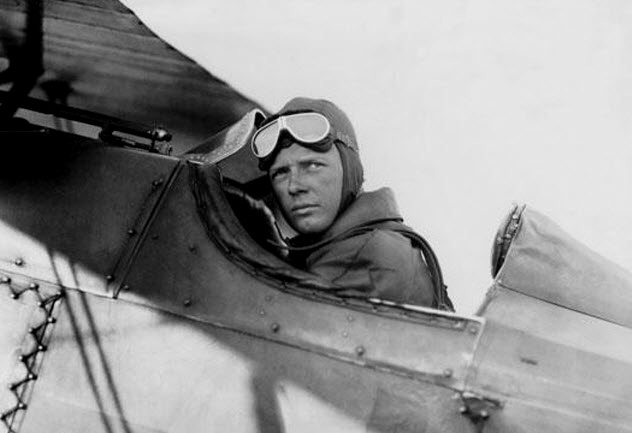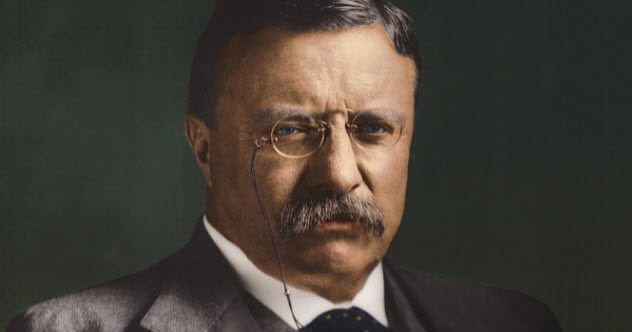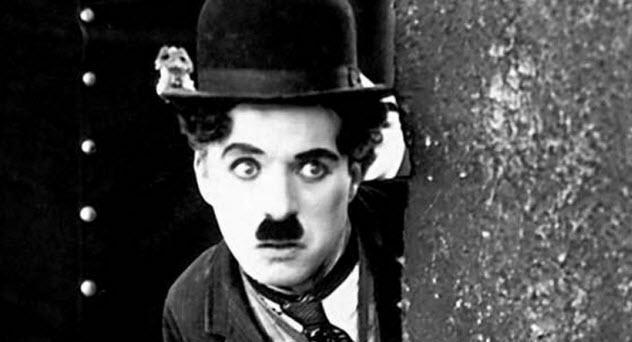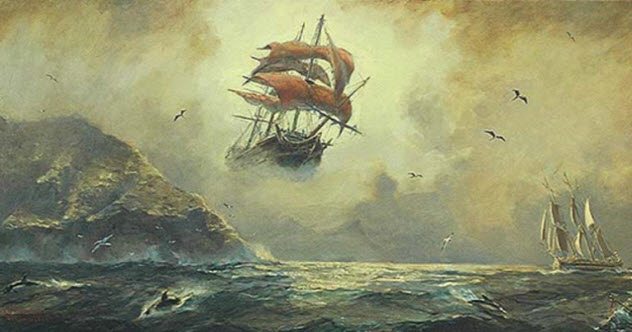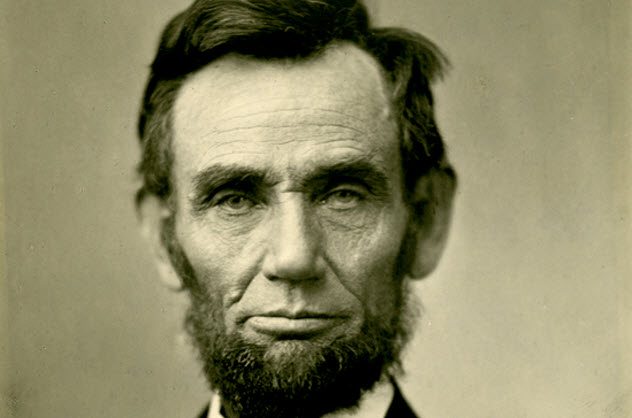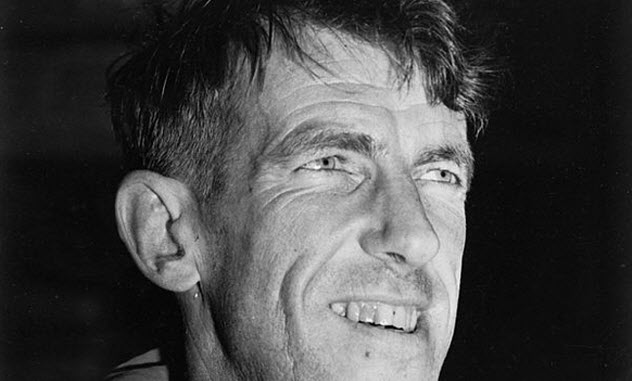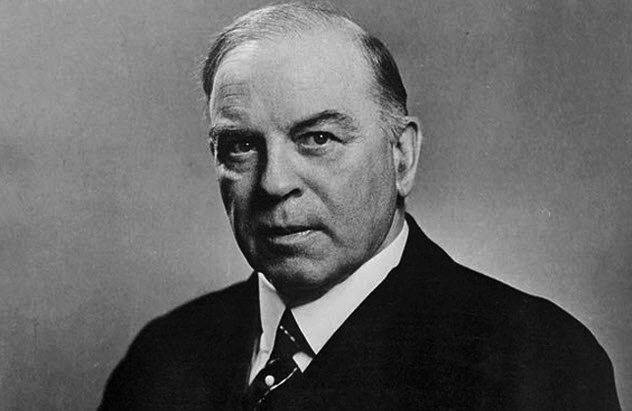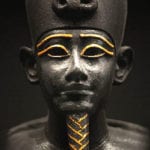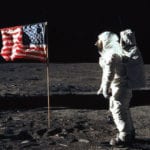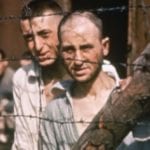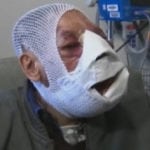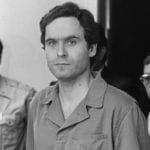There are some instances, however, of unbelievable stories told by believable people—notable people, people who have made great contributions to the world and who are generally not considered, well, crazy. Credible, of course, is somewhat subjective, and several of these stories can certainly be attributed to the times or the culture in which the storytellers lived. Nevertheless, whether you consider yourself a skeptic or a believer, here’s hoping that you’ll enjoy this intriguing list of incredible stories told by credible people.
10 Charles Lindbergh And The Gremlins
Fans of The Twilight Zone are familiar with the gremlin, a mythological creature with a mischievous nature and an affinity for aircraft. Stories of gremlins originated with British Royal Air Force pilots who reported seeing small creatures in the cockpits or on the wings of their planes during World War I. Reports continued during World War II. Some described gremlins as benevolent and even helpful, offering guidance to help pilots avoid crashing. Others described them as destructive and dangerous, drinking fuel, biting through cables, and tearing holes into the wings of the plane—like the gremlin on The Twilight Zone who so vexed William Shatner (and later, John Lithgow). Before Shatner and Lithgow, there was world-famous aviator Charles Lindbergh, who wrote about his experience with gremlins in his book The Spirit of St. Louis (1953). He described them as “vaguely outlined forms, transparent, moving, riding weightless with me in the plane.” Lindbergh said he felt reassured, not alarmed. “These phantoms speak with human voices—friendly, vapor-like shapes, without substance, able to vanish or appear at will, to pass in and out through the walls of the fuselage as though no walls were there.”[1] Their voices, he said, were “conversing and advising on my flight, discussing problems of my navigation, reassuring me, giving me messages of importance unattainable in ordinary life.” While Lindbergh’s story may easily be chalked up to fatigue from hours of flying, he relates the tale earnestly as a spiritual experience that led him to question the nature of his very existence.
9 Robert Stacy-Judd And The Hermit Of Loltun
Robert Stacy-Judd was an architect whose best-known building was and still is the Aztec Hotel in Monrovia, California. Born and trained in England, Stacy-Judd’s work was influenced by the pre-Columbian architecture of Mexico and Central America. His Aztec Hotel began the brief but wildly popular Mayan Revival in the United States during the 1920s. (It should be noted that the hotel is actually mostly Mayan in style, but Stacy-Judd believed that Americans were more familiar with Aztecs than with the Maya.) Stacy-Judd’s strange tale was recorded by the man himself in a manuscript he titled The Hermit of Loltun. While exploring the underground Loltun Caves in the Yucatan, Stacy-Judd and his party became hopelessly lost. As they tried to retrace their steps, he wrote that they encountered an old man whom he estimated to be “well over one hundred years old.” Stacy-Judd remarked that it was “inconceivable” for a person to live “at least [30 meters (100 ft)] beneath the floor of the jungle and an indeterminable distance from the entrance to the caves, further in than any person before had penetrated.” Yet this is exactly where the hermit claimed to dwell, guarding Mayan treasure. The kindly hermit guided Stacy-Judd and his party out of the caves before waving farewell and disappearing back inside.[2]
8 Teddy Roosevelt And Bigfoot
Theodore Roosevelt, the 26th president of the United States of America, is well-known as a hunter and lover of the outdoors. In a book titled The Wilderness Hunter, Roosevelt related a story told to him by a “grisled, weather-beaten old mountain hunter” who went by the name Bauman. Roosevelt said that Bauman’s story “impressed” him, and while Roosevelt expressed some skepticism, he concluded that “no man can say” whether Bauman’s story is true or not. (He also states that frontiersmen are “too hard and practical, and have too little imagination” to make up such stories.) Here is the tale passed along by Roosevelt: Bauman and an unnamed companion were trapping beaver in a “wild and lonely pass” where a solo hunter had apparently been killed and half-eaten by some kind of beast the previous year. After some light exploration, Bauman and his partner returned to their camp to find that it had been visited by a bear. Or so they thought. Then they noticed that the prints appeared to belong to a bipedal creature.[3] That night, Bauman was awakened by a noise and saw “the loom of a great body in the darkness” before he scared it away with a shot from his rifle. The two men didn’t separate at all the next day. When they returned to the camp that evening, they found that it had been visited yet again. That night, they made a big fire and did their best to take turns sleeping. Around midnight, they observed the thing moaning and watching them from across a brook for nearly an hour. In the morning, the two men finally decided to leave after they had gathered all their traps. They separated one final time. Hours later, Bauman found his partner’s still-warm body with a broken neck and bite marks on his throat. Bauman fled immediately, leaving everything but his rifle.
7 Deke Slayton And The Unidentified Flying Object
Donald Kent Slayton flew 56 combat missions in Europe and seven over Japan during World War II before becoming an aeronautical engineer and, eventually, an astronaut. In 1975, Slayton served as the Apollo docking module pilot for a mission that marked both the first successful test of a universal docking system and the first meeting in space between American astronauts and Soviet cosmonauts. For this and other contributions, Slayton earned a number of medals and honors, including the NASA Exceptional Service Medal, the NASA Outstanding Leadership Medal, and the Wright Brothers International Manned Space Flight Award. Slayton also appears in some found footage describing an encounter that he had during a 1951 test flight with what he said first appeared to be a weather balloon. When Slayton doubled back to “make a pass” on it, he said the object no longer looked like a balloon but like “a saucer sitting on an edge.” Slayton says the object then “took off, climbing at about a 45-degree angle and just accelerated and disappeared. [ . . . ] I obviously couldn’t follow it with an old piston-engine fighter, so I turned around and went home.” Slayton wrote about the experience in his book Deke![4]
6 Rene Descartes And The Three Visions
Born in 1596, Rene Descartes was the French mathematician, scientist, and philosopher who said, “I think, therefore I am.” Though Descartes’s method of using philosophy, mathematics, and logic to understand the physical world led him to some wrong conclusions (for example, that the heart moves blood through the body by heating it), he is also credited with inventing methodological skepticism and analytic geometry. He is sometimes referred to as the father of modern philosophy for his emphasis on doubt, observation, and experimentation. So perhaps this makes it more interesting that Descartes credited three dreams or “visions” with revealing to him some of his most important ideas. While visiting Neuburg in Germany in 1619, Descartes said he had three visions of flashing light and clapping thunder. He was visited by a divine spirit, he said, and emerged from the experience with the concepts of analytic geometry fully formed in his mind.[5]
5 Charlie Chaplin And The Human Frog
Charlie Chaplin is widely regarded as one of the most important figures in the history of film. He was a producer, writer, director, composer, actor, and comedian who initially shot to fame thanks to his character, The Little Tramp. Though Chaplin was reportedly fearful about transitioning to “talkies” after years of mastering the art of pantomime, he continued to enjoy great success after the silent film era, cementing his status as a legend of the silver screen. In his autobiography, Chaplin told of a disturbing experience he had as a teen while touring with a theater troupe. While lodging at a miner’s house in Ebbw Vale in Wales, Chaplin said his host offered to show him a “human frog” called Gilbert.[6] Chaplin described Gilbert as “a half a man with no legs, an oversized, blond, flat-shaped head, a sickening white face, a sunken nose, a large mouth and powerful muscular shoulders and arms [who] crawled from underneath” a dresser when summoned by Chaplin’s host. Though he had no legs, the man had “ten thick, stubby toes” sticking out from some cut-off flannel underwear. Gilbert smiled at Chaplin with “a set of yellow, widely spaced teeth” before launching himself into the air by his arms “almost to the height of my head,” Chaplin said. Chaplin’s story isn’t necessarily unbelievable, but it is pretty incredible as well as creepy and sad. Even more disturbing is the infamous X-Files episode, “Home,” that was inspired by the tale.
4 King George V And The Flying Dutchman
George V, king of the United Kingdom during World War I, is remembered for his support of the middle class and his devotion to Great Britain as a whole. In 1881, King George V (then Prince George) and his older brother, Prince Albert, were on the HMS Inconstant off the coast of Australia. Their personal writings from the trip were later published, and either George or Albert wrote the following: July 11th. At 4 AM, the Flying Dutchman crossed our bows. A strange red light as of a phantom ship all aglow, in the midst of which light the masts, spars, and sails of a brig 200 yards distant stood out in strong relief as she came up on the port bow. The look-out man on the forecastle reported her as close on the port bow, where also the officer of the watch from the bridge clearly saw her, as did also the quarterdeck midshipman, who was sent forward at once to the forecastle; but on arriving, there no vestige nor any sign whatever of any material ship was to be seen either near or right away to the horizon, the night being clear and the sea calm. George or Albert added that, hours later, one of the seamen who also saw the vessel “fell from the fore topmast crosstrees on to the topgallant forecastle and was smashed to atoms” and then “buried in the sea.”[7]
3 Abraham Lincoln And The Two Faces In The Mirror
Abraham Lincoln’s incredible tale is related in the book Recollections of Abraham Lincoln, 1847–1865 written by his close friend and bodyguard, Ward Hill Lamon. According to Lamon, Lincoln confided in him about a chilling experience he had the night he was elected 16th president of the United States. Alone in his room, Lincoln glanced into a mirror and saw two versions of his own face, one “reflecting the full glow of health and hopeful life” and the other “showing a ghostly paleness.” Reportedly, when he was renominated in 1864, Lincoln recalled this experience and concluded that the ghostly face he had seen that night meant “he would surely hear the fatal summons from the silent shore” before the end of his second term. In Recollections, Lincoln’s inability to reproduce this phenomenon in another mirror was touted as mysterious. Now, that inability is held up as proof that this event was simply the result of a flawed mirror.[8] Nevertheless, if one of Lincoln’s close friends is to be believed, the sight had a profound and haunting effect on Lincoln during the last years of his life.
2 Sir Edmund Hillary And The Yeti
In 1953, Edmund Hillary and Tenzing Norgay became the first people to climb to the summit of Mount Everest, the highest mountain above sea level in the world. Of course, Hillary was an experienced climber prior to this undertaking, having scaled the highest mountain in New Zealand (his home country) in 1948. In his book High Adventure, Hillary wrote about his experience at over 5,800 meters (19,000 ft) high in the Himalayas in 1952, a year before his most historic climb: We were climbing quite a steep pitch when Pemba [a Sherpa] stopped and picked something off the rock. Obviously greatly excited, he showed it to Angpemba. Feeling somewhat curious, I asked them what it was all about. They placed in my hand a tuft of long, black hairs—thick and coarse, they looked more like bristles than anything else. “Yeti, Sahib! Yeti!” I couldn’t help being impressed by their conviction, and it did seem a strange place to find some hair.[9] Hillary began conversing with explorer George Lowe about the find, but “scenting our intentions, Pemba leaned forward and his gnarled old hand snatched the tuft away and threw it far over the bluff.” In fact, the experience made such an impression on Hillary that he later set out to investigate the existence of the yeti. It must be said, however, that Hillary ultimately concluded that no such creature exists. He shared his findings in a 1961 LIFE magazine article which explained away yeti-related findings. It ended by stating that “it is undoubtedly in the field of mythology that the yeti rightly belongs.”
1 William Lyon Mackenzie King And The Spirits
William Lyon Mackenzie King was prime minister of Canada for more than 20 years, which included much of the Great Depression and all of World War II. His leadership, though famously cautious and compromising, has been credited with creating a stronger and more independent voice in the world for Canada. Despite his reputation for being a dullard, King actually held a number of bizarre beliefs which informed his decisions. He regularly looked to dead people, tea leaves, and even the formations of his shaving cream for guidance. King kept detailed handwritten logs of his experiences and conversations with spirits at seances and in dreams. He wrote accounts of speaking to everyone from his dead mother to former prime minister Wilfrid Laurier. So strange and voluminous were his stories that even one of his biographers, Allan Levine, wrote that “it is impossible to comprehend how anyone, let alone the sixty-year-old leader of a political party, could devote so much of his valuable time to scribbling this nonsense. Yet scribble it he did.”[10] Hannah lives in Seattle with her husband and dogs. She enjoys researching and writing.
